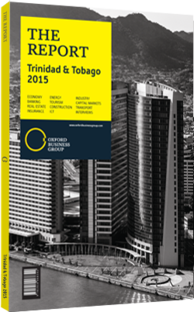Kevin Ramnarine, Minister of Energy and Energy Affairs: Interview

Interview: Kevin Ramnarine
What is the current status of the discussions with Venezuela on the unitisation of cross-border fields?
KEVIN RAMNARINE: Trinidad and Tobago and Venezuela have been in discussions on the unitisation of cross-border reserves for 13 years now. It is something that has never been realised before in the Americas. There are few major cross-border fields around the world that are currently in production. The first and probably most successful agreement was signed in the North Sea between UK and Norway in the 1960s. Other offshore examples include fields between Malaysia and Thailand, Nigeria and São Tomé and Príncipe, and Australia and Timor-Leste. These agreements entail a very complex arrangement at the political, technical and commercial levels.
Following the visit of Venezuelan president Nicolás Maduro in February 2015, we have taken major steps with regard to the Loran-Manatee gas field, and we are very close to an agreement amongst the four operating companies on how the gas should be commercialised. I see Loran-Manatee moving into production in the next three to five years. It is a very significant energy resource, with around 10trn cu feet (tcf) of natural gas, and 27% of this stranded gas currently belongs to T&T. In addition, we have also signed a unitisation agreement for the smaller Cocuina Manakin cross-border field, which contains 740bn cu feet (bcf).
On a side note, we have also discussed with Venezuela the possibility of importing their crude oil to T&T for processing at our Petrotrin refinery. T&T is aiming to enhance its business relations with Latin American countries, and energy is certainly a sector in which stronger bridges can be built.
How is the country’s Natural Gas Master Plan going to impact the industry’s competitiveness?
RAMNARINE: The Natural Gas Master Plan 2014-24 will highlight a way for T&T to organise the industry to make the best use of its gas in terms of revenue, local content and employment generation, as well as to attract the most investment. This will naturally take into account both domestic dynamics – with three major local energy contracts set for renewal in the next three years – and exogenous factors, such as US shale gas. The plan is meant to serve as a research basis to inform policymaking to optimise gas allocation across the liquefied natural gas, petrochemicals and metals segments, but also as a way to create the right incentives to attract investment in more upstream activity.
One of the most interesting findings that emerged is the potential for the exploration of small natural gas and condensate deposits. The Ryder Scott audit identified 151 prospects with an unrisked mean volume of 39.9 tcf. On a risked (expected) basis, this portfolio delivers 6.2 tcf; 64% of the prospects are less than 200 bcf on an unrisked basis, and when we risk these 151 prospects 94.7% are under 200 bcf. These small deposits, depending on the liquid content and distance to infrastructure, may present a deterrent to exploration. A separate fiscal regime will be required to develop these small prospects. We cannot ignore these stranded reserves.
What is the future of the onshore oil industry?
RAMNARINE: Petrotrin’s land production is moving towards the joint-venture model with the so-called independents. Companies like LGO, Lease Operators and Touchstone Exploration have clearly demonstrated the attitude and aptitude to produce oil. In order to further enhance production, we are carefully looking at Colombia’s Ecopetrol model. A key success factor of their model is the use of incremental production sharing contracts, whereby you invite someone to take over your producing field. The investor raises production and takes a share of the incremental rise in output.
Incentives are what motivate people to invest; therefore, we are considering applying Colombia’s model to T&T. In 2002 Colombia faced challenges regarding unions, employees and social tensions, and still was able to make a historic change to the industry’s structure. Ecopetrol is now the shining star of Latin America, having surpassed Petrobras by market capitalisation.
You have reached the limit of premium articles you can view for free.
Choose from the options below to purchase print or digital editions of our Reports. You can also purchase a website subscription giving you unlimited access to all of our Reports online for 12 months.
If you have already purchased this Report or have a website subscription, please login to continue.

